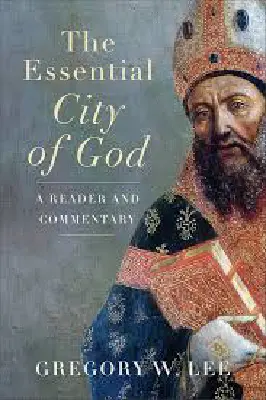Podcasts about Judaism
Episodes about Judaism

Jul 10, 2025
Who Really Wrote the Torah? A Conversation on G-d, Truth, and the Power of Ideas
Kabbalah for Everyone ❭
Send us a textIn this heart-open, mind-stretching class, Rabbi Yisroel Bernath dives headfirst into one of the most profound questions ever asked: Who wrote the Torah and what do we mean by G-d? Sparked by a challenge from Ilana, a thoughtful soul who just "won the raffle" and then handed Rabbi Bernath some of the hardest theological questions he's faced, this class isn't a debate, it’s a bridge. Drawing from Torah, Talmud, Rambam, Tanya, Harari, Einstein, Spinoza, and Chassidic mystics, we explore traditional belief, academic scholarship, and the honest soul-searching that sits between them.Is the Torah a divine blueprint or a human masterpiece? Or… could it be both?Together, we walk a path between Sinai and the seminar room, from ancient revelation to modern doubt and discover that sometimes, the questions themselves are the invitation to a deeper relationship with truth.Key Takeaways:Traditional Belief Holds Depth: Torah mi-Sinai means Moses recorded divine revelation over 40 years. It's not simplistic, it’s layered and deeply rooted in Jewish collective memory.Modern Scholarship Brings Honest Challenges: Thinkers like Harari argue that the Torah was assembled over centuries, reflecting political and social needs. These critiques must be addressed, not ignored.Kabbalah and Chassidus Provide a Bridge: Divine revelation doesn’t exclude human expression. The Torah flowed through Moses’ voice and personality, G-d worked with human vessels.Assumptions Shape Interpretation: Believers and skeptics alike interpret the same data through different axioms. Acknowledging this fosters respectful dialogue rather than defensiveness.The Torah’s Endurance Is Itself a Testament: Its moral vision, power to unite, and enduring relevance across time and culture hint at something more than human genius, it points toward the Divine.This Is Not About “Winning” an Argument: It’s about honesty, humility, and the courage to explore big questions together.The Torah Is a Living Document: Beyond history or philosophy, Torah continues to speak—not just inform, but transform. That may be its greatest proof of all.#Torah #God #Judaism #sinai #Moses #Divinerevelation #Documentaryhypothesis #YuvalNoahHarari #Kabbalah #Jewishtradition #BiblicalCrticism #Tanya #Spinoza #chassidus #Faith #theology Support the showGot your own question for Rabbi Bernath? He can be reached at rabbi@jewishndg.com or http://www.theloverabbi.comSingle? You can make a profile on www.JMontreal.com and Rabbi Bernath will help you find that special someone.Donate and support Rabbi Bernath’s work http://www.jewishndg.com/donateFollow Rabbi Bernath’s YouTube Channel https://www.youtube.com/user/ybernathAccess Rabbi Bernath's Articles on Relationships https://medium.com/@loverabbi

Jul 09, 2025
Shema is Yisrael (Stories for Yud Bes and Yud Gimmel Tammuz)
The Chassidic Story Project with Barak Hullman - A Chassidic Story Every Week ❭
This week I have two stories for you for Yud Bes and Yud Gimmel Tammuz. The first is about Rabbi Yosef Yitzchak as a young man being sent to avert a decree against the Jewish community and the second a story told by the Friediker Rebbe about a simple chassid of his grandfather, the Rebbe Reb Shmuel.
If you're enjoying these Chassidic stories, please take a quick moment to buy me a coffee. https://ko-fi.com/barakhullman Thank you! I deeply appreciate your support!
Also available at https://soundcloud.com/barak-hullman/shema-is-yisrael.
To become a part of this project or sponsor an episode please go to https://hasidicstory.com/be-a-supporter.
Hear all of the stories at https://hasidicstory.com.
Go here to hear my other podcast https://jewishpeopleideas.com or https://soundcloud.com/jewishpeopleideas.
Find my books, Figure It Out When You Get There: A Memoir of Stories About Living Life First and Watching How Everything Falls Into Place and A Shtikel Sholom: A Student, His Mentor and Their Unconventional Conversations on Amazon by going to https://bit.ly/barakhullman.
My classes in Breslov Chassidus, Likutey Moharan, can be found here https://www.youtube.com/@barakhullman/videos
I also have a YouTube channel of ceramics which can be found here: https://www.youtube.com/@thejerusalempotter

The annual cycle Torah reading for this week is parsha "Chukat," Numbers chapters 19 through 21) and it contains what is sometimes called the most enigmatic "chuq" (or, "do this because He says so") in the Torah: the Red Heiffer, or parah adumah. Even Solomon is thought to have said he just didn't quite get it.
The Erev Shabbat reading:
https://hebrewnationonline.com/wp-content/uploads/2025/07/SSM-7-4-25-Chukat-teaching-podcast-xxx.mp3
The Sabbath Day midrash tackles that Greatest Mystery head on. But, even more interesting, what might be the SECOND most mysterious 'chuq' in the Torah is in this same parsha! The "bronze serpent" (but the Hebrew term is much more alliterative: 'nachash nachoshet') - aka the 'snake on a stick.'
There is a common thread that runs through this entire portion, too. Actually, several, but all evidently related: Death. And some important numbers. And water, in multiple ways, and 'salvation.' But still one more that Mark suggests, which may even help explain some of the confusion, is "I blame Moses."
Chukat: "From the Red Heifer to the Snake-on-a-Stick -- I blame Moses"
https://hebrewnationonline.com/wp-content/uploads/2025/07/WT-CooH-7-5-25-Chukat-Red-Heiffers-Snakes-on-a-Stick-and-another-jesus-water-life-death-I-blame-Moshe-podcast-xxx.mp3
The combined two-part reading and Sabbath midrash:

We all recognize that we will eventually die. Each of us know that there will come a point in time where our body and Soul separate and go their own way. The body will return to its origin, the dust, and the Soul will return to its Heavenly roots. What happens to our Soul in […]

Episode: Gregory Lee talks with Amy Brown Hughes about one of the more well-known but little-understood books in theology, Augustine’s The City of God! This episode covers everything from political theology, […]
The post Gregory Lee – The Essential City of God first appeared on OnScript.

Shalom everyone! Here is the Torah Tidbit taken from the portion Chukat meaning “Statutes” or “Ordinances”. The focus of this Tidbit is “A Pearl Of Great Price”. I hope you will enjoy.

What do you get when a Shabbat dinner meant to welcome a soon-to-be daughter-in-law turns into a night of secrets, revelations, and unlikely wisdom? You get Bad Shabbos—a comedy with heart, directed by Daniel Robbins and co-written with Zack Weiner.Robbins joins Rabbi Yoshi to discuss his new film set on the Upper West Side of Manhattan, where a Jewish family hosts Shabbat dinner for their son David and his fiancée Meg, who is preparing to convert to Judaism. As the night unfolds, tensions rise, surprises surface, and laughter and love do battle at the dinner table.At the emotional center of the film is Meg, whose D’var Torah—something she’s been studying with her rabbi as part of her conversion process—is delivered during the meal as a reflection on that week’s Torah portion. Her words, full of insight and heart, speak to the serendipitous nature of life and the power of choosing one’s path with intention and faith. With a standout ensemble cast including Kyra Sedgwick, Milana Vayntrub, David Paymer, and Method Man as the family’s beloved doorman who is practically family, Bad Shabbos is as funny as it is touching.




